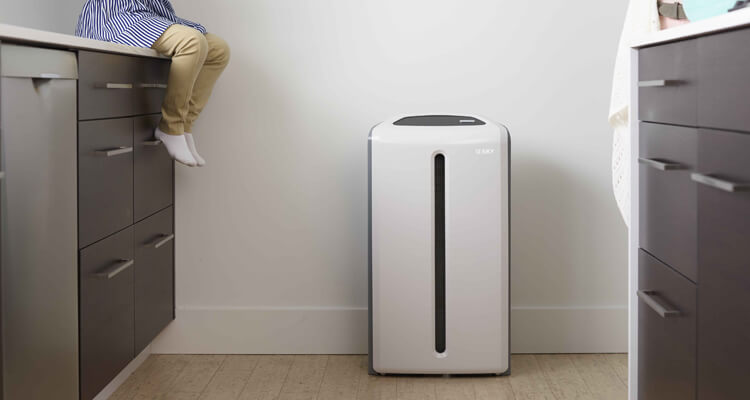Everything You Need to Know About HEPA Filters

HEPA Filters — why they’re so important
High Efficiency Particulate Air filters (HEPA filters for short) are everywhere today. From vacuum cleaners to air purifiers and even airplanes and motor vehicles, they are a powerful barrier between airborne pollutants and our delicate lungs. A true HEPA filter can remove at least 99.97% of particles 0.3-micron in size from the air. That’s about 300 times smaller than a strand of human hair.
From wartime necessity to household name
HEPA filters come from an interesting background. Did you know? HEPA filters were first created in the 1940s to combat airborne radioactive contaminants during wartime. The growth of industrial manufacturing and strict air pollution laws brough HEPA filters indoors to families around the world.
4-step filtration
HEPA filters are so efficient because of their design. Made with a combination of interweaving fibres, it acts as an intricate spider’s web that traps contaminants and pollutions through four main processes:
- Direct impaction: Large contaminants like dust and pollen are caught here.
- Sieving: Finer particles are sieved through two fibres and trapped.
- Interception: Even smaller particles that move with the airflow are pushed through the fibre webbing and stuck to the sides of these fibres.
- Diffusion: Ultrafine particles that manage to escape the first three processes are passed through a tightly woven filter that keeps them from passing through the air.
Fact or fake — are all HEPA filters the same?
HEPA filters come in all shapes and sizes, but not all filters are the same. Some air purifiers on the market don’t even use a real HEPA filter! ‘HEPA-like’ filters are sometimes highlighted in air purifier brands, but don’t be fooled! They are not the same as true HEPA filters.
True HEPA filters need to be accredited by recognised third party organisations like the United States Department of Energy (DOE) or the Institute of Environmental Sciences and Technologies (IEST). This confirms that the HEPA filter used in the air purifier can perform as expected.
Clearing the air
The bottom line of choosing an air purifier is to always make sure you’re getting what you pay for. The Atmosphere SKY, for example, features a three-layer filtration system that includes a certified HEPA filter and carbon filter to boot.
Can’t be sure that the HEPA filter in your air purifier is doing what it’s meant to do? Here’s a video of what Atmosphere SKY’s HEPA filter can do for comparison: